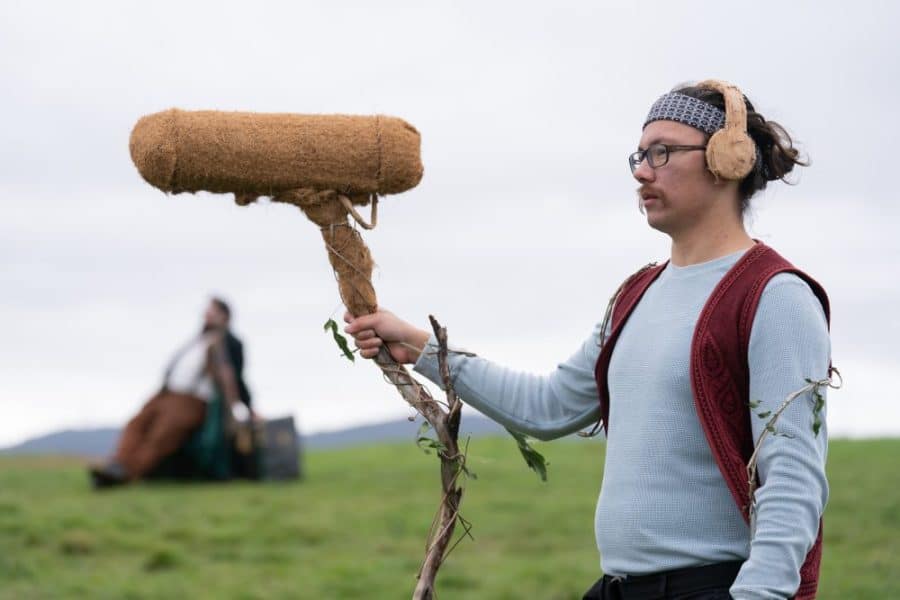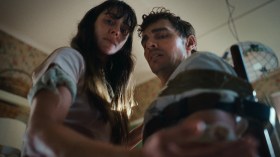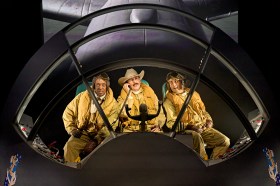How do you bring a specific milieu to life through cinema? Place, be it real or fabricated, emerges with varying degrees of prominence in most films; yet there’s something especially miraculous about those works that allow story and individual character development to take a back seat to the job of evoking the locale in which they’ve been made.
Two of the most memorable examples of this approach for me are Richard Linklater’s Slacker (1990), a comedic portrait of the assorted fringe-dwellers of late 1980s Austin, Texas; and Agnès Varda’s Daguerréotypes (1975), a documentary shot on the Rue Daguerre in Paris, beautifully freezing its businesses and shopkeepers in time. In these films, we’re offered a window into what once was. No matter how reflective they are of what was actually going on from day to day in that particular city or on that particular street, the settings of these films are now entire worlds that live on thanks to cinema.
Paco: deeply rooted in place
Tim Carlier’s Paco (2022) is a small film (in terms of budget and distribution, at any rate) that achieves something equally precious for its setting of post-COVID Adelaide. If, like Slacker, its intention is mostly parodic – its characters are a similar tangle of eccentrics, artists and dilettantes, all played for laughs – it also captures something about the city that feels deeply rooted in the place it was shot, contained within the CBD-hugging parks, footpaths, pubs, churches and warehouses that populate the film, as well as about the community of people who made the film (many of the actors appear to be playing thinly veiled versions of themselves).
The truth behind Paco’s caricature is something I find easy to recognise, having spent my youth and early adulthood in Canberra: another arty, intellectual place that’s just a little bit too suffocatingly small and tight-knit, where you can’t walk very far in the city centre without running into somebody you know.
Paco doesn’t announce any of these intentions at the outset, however. Its opening sequence takes place on a smoky film set, in which twentysomething actress Hebe (Hebe Sayce) is performing a scene from what appears to be a generic post-apocalyptic fantasy film, complete with prosaic, portentous dialogue about royal lineage and the fulfilment of a prophecy. Across a painfully hilarious and affecting thirteen-minute unbroken shot, Hebe repeatedly forgets her lines, prompting further takes in which her elderly castmate Lyn (Lyn Pike) must begin by humming a song while ladling hot soup into a bowl. As the soup gets colder, the light fades, Lyn becomes increasingly frustrated, and crew members bark instructions to one another, Hebe’s own mood declines from self-deprecating jokes to misery, finally delivering her lines through barely suppressed tears.
Sayce is a talented and expressive performer – she is also excellent in Jordy Pollock’s upcoming hour-long feature Wabi Sabi Rendezvous (2024), an even smaller but thoroughly charming Adelaide-set production that would make for a great double bill with this film – and throughout this opening sequence, she quickly emerges as Paco’s emotional focal point. But this turns out to be a feint: at the conclusion of the scene, she absconds from the shoot and, for the most part, from the film itself. In her place, we see impassive sound recordist Manny (Manuel ‘Paco’ Ashman) emerge into the broad daylight of the studio’s parking lot, and the film’s contours accordingly shift around him: the aspect ratio recedes from widescreen to a vignetted 4:3, the darkened corners of the frame suggesting hidden-camera footage; and the film’s central narrative, insofar as it can be said to have one, kicks off. Manny, we immediately learn, is on a quest to retrieve Hebe’s lavalier mic, which she has forgotten to remove from her shirt in her anguished hurry to leave.
The first indication that we’ve shifted from awkward, realist situational comedy to sketch-style burlesque comes almost immediately after this: no sooner has Manny gotten into a production runner’s car in the hope of tailing Hebe’s ride than his driver has leapt out to engage in a WWE-style bout with a man heckling him outside, leaving his bemused passenger stranded as the struggle plays out through the rear window. As Manny continue his pursuit on foot, he encounters a succession of incidental characters who come across as refugees from an improv show: a man in a long coat and suspenders boasts of having journeyed back in time from twenty-four hours in the future; an artist friend begs Manny to come see her exhibition; and a black-clad man standing beside a tree makes vaguely threatening observations.
Eccentric, comedic, absurd
At every turn, Manny’s progress is frustrated, particularly by those who see his ever-present boom mic as a signal that he is available for free labour – no doubt a wry joke about small-time, volunteer-heavy communal art projects like the one we’re watching. Throughout the film, he keeps being dragged away from his mission by a pair of film crews, one filming an eccentric architectural expert’s piece to camera and another attempting to shoot a music video, each of whom – technicians as well as subjects – progressively encroach on and eventually totally inhabit one another’s space. As Manny’s quest stops and starts, Hebe’s voice is sporadically heard through the crackling radio transmission of his portable recorder, suggesting that she may be close by – as if she were the White Rabbit of this inner-city wonderland.

In the heightened, absurdist world of Paco, the (at most) trivial annoyance of missing recording equipment is treated as a literal matter of life and death. This is at first only hinted at through the observations of others – ‘Isn’t that, like, really bad?’ a girl sitting outside a pub nonchalantly remarks – but manifests later in the film when, first, Manny is dragged before a council of ‘soundies’ and stripped of his gear as punishment for his carelessness; and then when, in the penultimate scene, Hebe is seized and prepared for execution. Before this (transparently thin) plot reasserts itself, however, the film takes a delightful excursion into pure surrealism: after waking up the morning after a suburban house party that came complete with a mysterious humming backyard orb, Manny walks back out the front door into the wilderness of what appears to be remote rural South Australia. He commences the long journey back to Adelaide on foot, taking the opportunity to make some foley recordings along the way – only to, upon his return, walk into a church whose interior disappears into a screen projection.
Read: Housekeeping for Beginners review: a luminous tribute to found family
If there’s something broadly accessible in Paco’s irreverent treatment of its own plot and its often silly, deadpan dialogue (‘There’s some film people in the living room; there’s some anti-film people in the dining room,’ the house party’s host helpfully informs Manny at the door), there’s also a formally ambitious quality throughout that might put the film beyond the comfort zone of – or, to look at things more optimistically, bring something new and exciting to – mainstream audiences.
Fittingly for a film whose main character is a sound recordist, much of this is achieved aurally: jarring bursts of interrupted radio static recur over the soundtrack as Manny attempts to tune into the frequency of the missing microphone; and later, when the hapless technician’s equipment is taken away, the film’s audio disappears altogether for a whole three-and-a-half minutes as Manny walks through the city dejectedly and slumps on a park bench.
This is less showmanship than a bold artistic decision that’s of a piece with the film’s quirky and distinctive sensibility – an assuredness rewarded with a berth at last year’s International Film Festival Rotterdam but not, sadly, with anything more than the most fleeting local theatrical appearances and very limited Australian festival exposure. In recent years, the most interesting local screen work appears to be emerging from well outside the Screen Australia funding system and getting more or less buried in the aftermath, and Paco is sadly no exception. The tragedy here, repeated over and over, is that no sufficiently scaffolded distribution ecosystem exists in any form here to nourish work like this and get it out to the many viewers who would enjoy the film if they were aware it existed.
Part of the magic of films like Slacker and Daguerréotypes is embedded in the loss brought about by time; the further we get away from the existence of these people and these places, the more precious these relics become. The Adelaide of Paco is more proximate than the lost worlds of those earlier texts, and is filtered through the prism of absurdist fiction. But by taking these familiar locations and constructing a cinematic playground from them, the film reminds us of the latent beauty that exists within our own apparently mundane environments – and that any place at any fleeting moment can carve out a permanent home for itself on screen. Like the city of Adelaide itself, Paco is a destination more people really ought to visit.
Paco premiered at the 2022 Adelaide Film Festival, and received one-off theatrical screenings around Australia earlier this month. The film is yet to be added to a streaming service.
4 out of 5 stars
Actors:
Manuel ‘Paco’ Ashman, Hebe Sayce, Lyn Pike, Jasmine Crisp, Yoz Mensch, Rodney van der Wall, Stuart Patterson , Mary Angley , James Currie
Director:
Tim Carlier
Format: Movie
Country: Australia
Release: 06 May 2024





